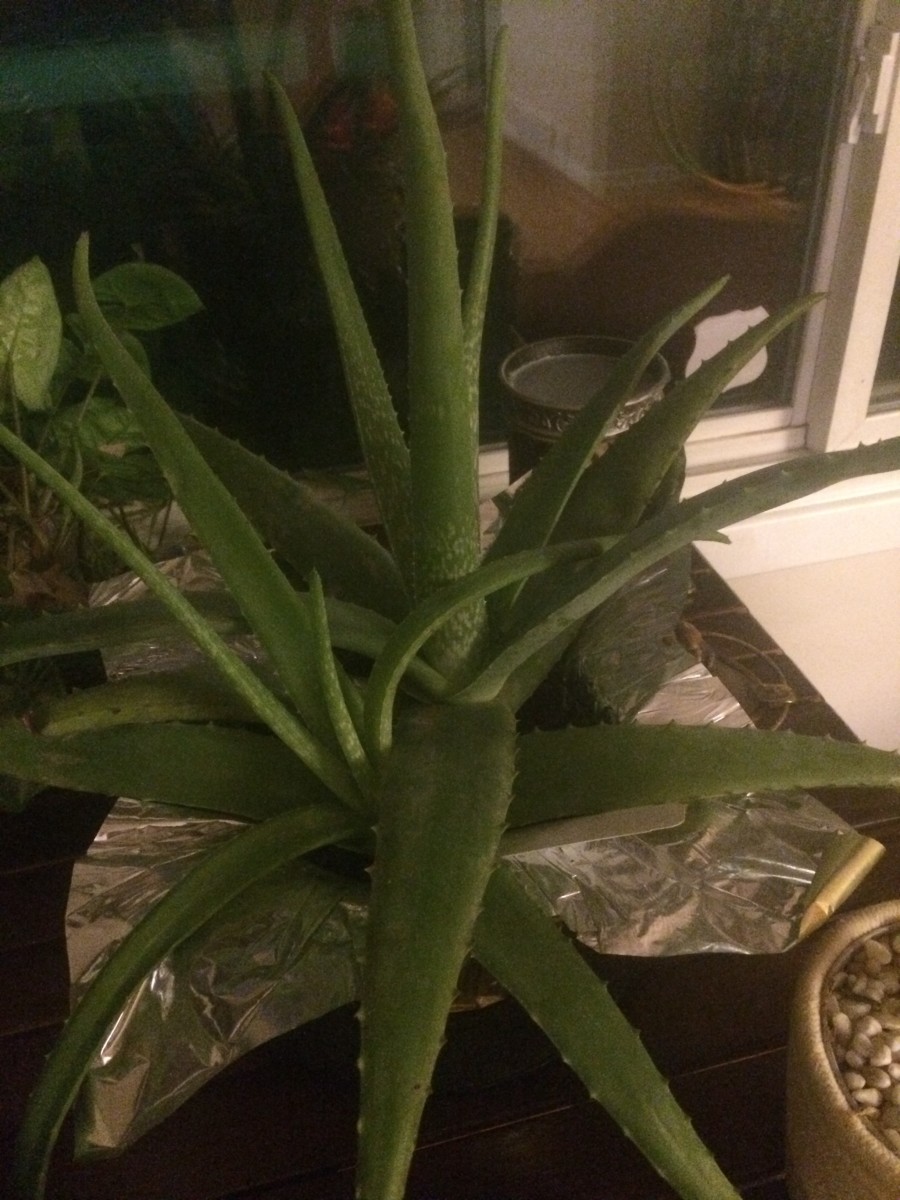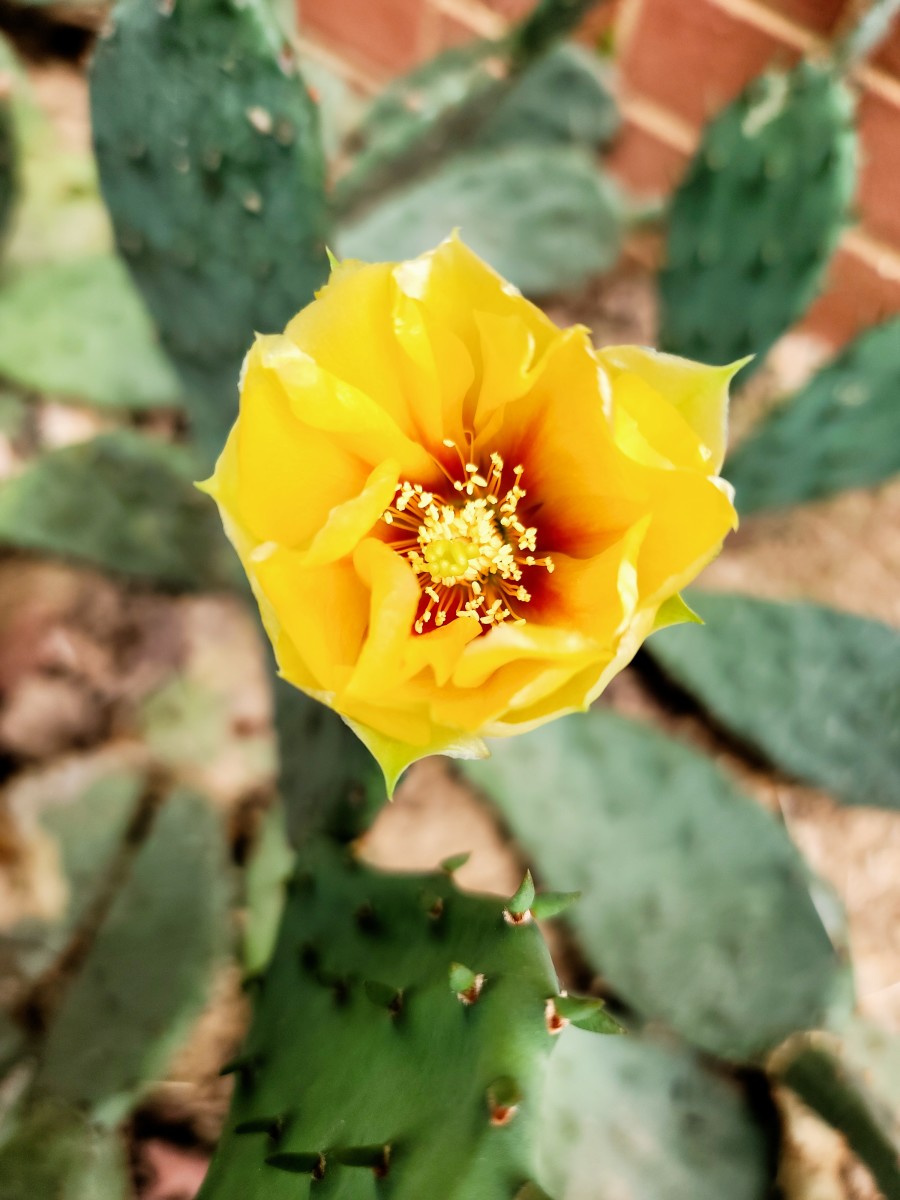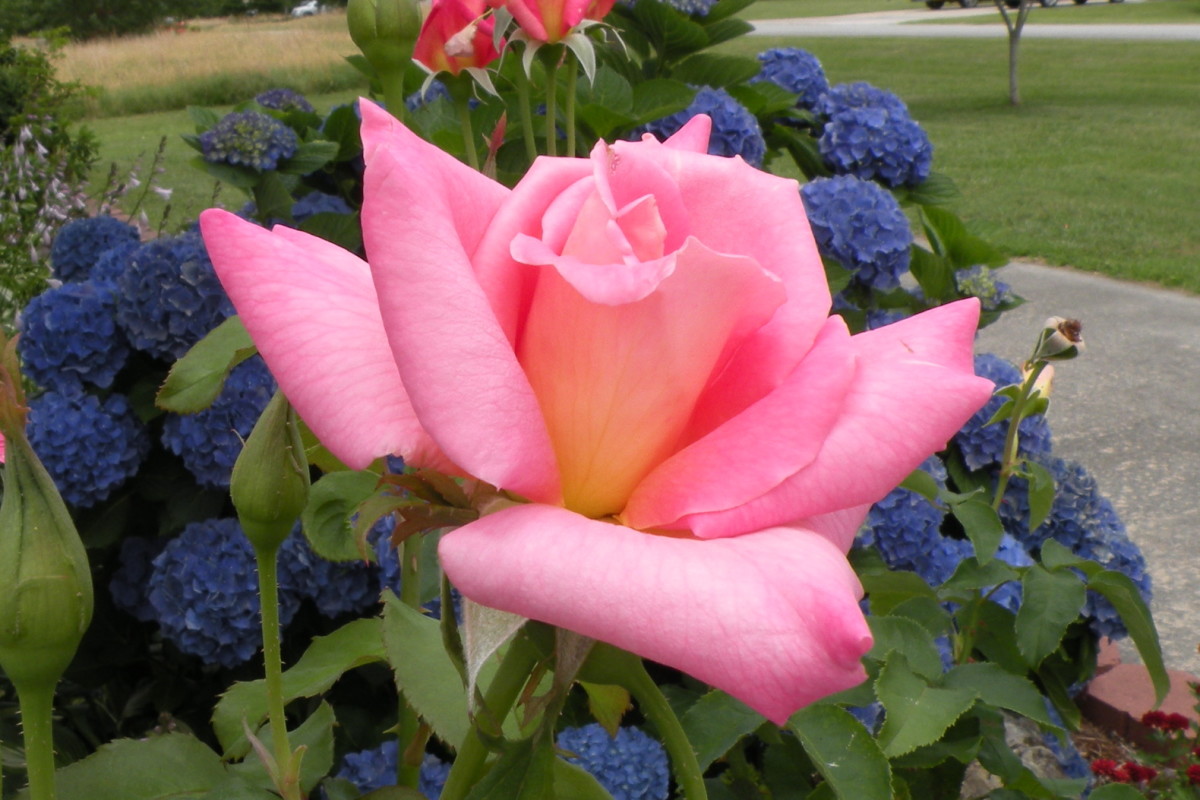Growing Aloe Vera
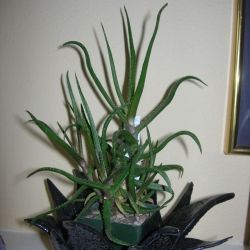
"It can't be killed," my friend swore. "Put it in dirt, and throw some water on it."
I wasn't all that good with house plants and hastened a few along to an early demise until I moved to this one apartment building and my upstairs neighbor gave me a piece of their aloe vera. Their aloe plant was enormous, and looked like it was on the verge of ripping their window box off the edge of the kitchen window. "If it shrivels, it needs water, if it gets yellow, it needs more light. It's easy," he said. "Honey, if this took any actual effort, I'd have killed it myself." Okay, he had me convinced...
That was close to twenty years ago now. And I'm still happily growing some crazy aloe vera plants. Read over this lens and see how easily you can turn that black thumb of yours to green too!
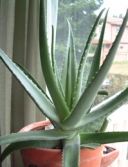
My Constant Kitchen Companion
I've had aloe vera plants in or near my kitchen for 20 years now. They are hardy, they seem to do really well (almost better even) when I ignore them, and they are great first-aid for the occasional kitchen hand injury. It really has turned out to be almost as easy as just putting them in dirt and throwing water on them. They tend to do kinda okay with that, but they do really well with just a bit of care and I've even got a few that seem to be doing fantastic, but I'm not sure exactly why.
I grew them for a long time without any idea of what I was doing, or why some plants thrived and others failed. I've learned to grow them by watching their colors and pinching their firmness and then adjusting light or water based on those. I knew if they got too yellow, it was too dark for them, but for some variations, it might also be too wet. Some red color seems to be okay for some plants, but too much red or really dark red and it means the plant is actually getting scorched.
Aloes are succulents, which means they are mostly made of retained water. That's why they are great for the semi-regular to utterly forgetful house plant gardener. They like a lot of light, but some varieties don't really care for full sun. I've grown them near windows with almost any exposure, as long as it was fairly-consistently light. Freezes will cause their plant cell walls to burst and kill the plant, so don't leave them outside if the temp is going to drop below freezing overnight. In most places I've lived, I've kept my aloe vera plants indoors but I have some friends who are in climates warm enough they are outside year-round.
Shown here is the aloe I got from my friend in San Jose. This is the only one I have that really likes direct sunlight/southern exposure. When I got it, it was about 1/3 of the size you see here, and the spines had dark red tips with reddish tones extending about a quarter of the way down them. As much as it did okay in a very warm and sunny climate, it grew like crazy once it was moved to my house, where it got bright but indirect light and slightly cooler temps. The spines will grow to reach towards the sun and it used to be more lopsided until I started to turn the pot regularly. A friend called it the "Cthulhu Aloe Vera" as a joke and said it looked like it was trying to grab me, and the nickname has stuck.
- Aloe vera
Aloe Vera can be a useful treatment for a range of ailments from inflammation and arthritis, to sunburn and bites. - Aloe - Wikipedia, the free encyclopedia
Aloe, also written Aloë, is a genus containing about four hundred species of flowering succulent plants. The genus is native to Africa and is common in South Africa's Cape Province and the mountains of tropical Africa, and neighbouring areas such a - Backyard Gardener - Growing Aloe Vera - March 1, 2006
The University of Arizona Cooperative Extension, Yavapai County, Backyard Gardener - Aloe Vera Blog
A blog dedicated to the healing powers of the Aloe vera L plant.
Books about the Aloe Vera plant
When To Repot Your Aloe Vera Plant
If you have to repot your aloe vera, you will want to do it in the springtime. During the winter the plants should be left alone and barely watered as they go into a dormant phase. Too much water and they'll just rot. In summer, the plants do their most active growing and by repotting in the spring, it gives them time to get over the shock and get reestablished in the new surroundings.
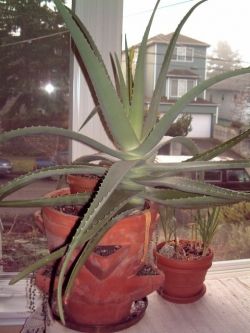
The Stoplight Guide To Growing Aloe
a three-color theory of aloe plant health
I've learned most of my aloe vera growing know-how through trial and error. Fortunately aloes are very hardy plants and I've found it's often easy to fix a problem and not actually kill the plant. Just looking at the color of the plant and touching it can give you a good idea of how it's doing. By the way, here's my "Cthulhu" aloe from 2008. See how much larger it's grown?
GREEN
YELLOW
Make sure the plant is able to dry out in between waterings and try to give it more daylight. Aloes will sometimes terminate the ends of longer or larger spines when resources start to drop off. Watch for multiple spines developing creases and then dropping off the ends of the spines.
RED
If the tips start to shrivel up along with turning red, try to move the plant to have a little less sun. If just one single leaf/spine turns red and shrivels up, this is the plant naturally pruning itself. This is how the older leaves die off by themselves.
Advice and Tips for Growing Aloe Vera
- Guide to Growing Aloe Plants
How to grow and care for Aloe vera plants and other medicinal house plants - Aloe - from the Lilaceae/Aloeaceae family
History, organic growing advice and brief medicinal uses - Granny's Kitchen: ALOE : caring for the plant, etc.
A dear friend in Palm Springs, CA gave me a plant; they are delightfully easy to grow and will flourish on "neglect" rather than too much care and feeding - "leave it alone!" was Jackie's comment to me when I asked about caring for it; water it maybe - Herbs Herbals - ALOE VERA - www.HerbsHerbals.com
This perennial herb is a member of the daylily family. There are over 500 species of aloe that are growing all over the world. Aloe originally came from Africa. - Aloe Vera database
Plants have been grown indoors in pots in order to help remove toxins from the atmosphere. It is also unusual in that it continues to release oxygen and absorb carbon dioxide in the dark, making it very suitable for growing in bedrooms. - aloe vera | Gardening with gary
Fantastic list of questions from people trying to grow aloe vera, with very detailed and useful answers from Gary.
Get Aloe Vera Plants on eBay
If you don't have anyplace to get aloe vera plants that is local to you, there is always the option of buying them via the Internet.
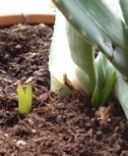
Detachable Babies or Pups
how I get all my new aloe vera plants
Part of why I've kept growing aloe veras for all these years is that mine have always made new plants really readily, and it means I wind up with more than one, so I've never lost an entire type on the rare occasion when I have a plant die.
My original aloe vera is very stalky with short stubby leaves. It produces little baby plants from off of the main stem, which are called "pups," and these actually detach or are cut off as near-fully-formed baby plants. If you stick the stem end in dirt and *don't* water it for about four to six weeks, it will most likely root itself. If you water it before it forms roots, it will rot and die.
The "Cthulhu" aloe reproduces by sending up new pups from the roots. They start poking up underneath the parent plant and then rapidly grow in size. (shown here, a few new plants just starting to show) When I've wanted to make more of this type, I let them grow to be about 3"-4" tall, then I cut these way down at the roots where they attach to the parent and move them to their own pots of dirt. Again, I don't water them for the first 4-6 weeks and see if they establish. This one starts so many shoots, I actually get rid of most of them. For a while, I gave them away, but now that all my friends have one, it's harder to find folks to give them to.
Blooming Aloe - where no plant has gone before
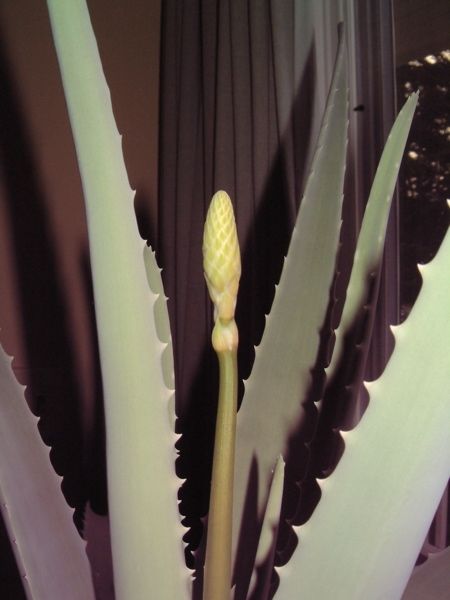
After fifteen years of growing aloes as house plants, there really wasn't anything they do that surprised me. Until January 21, 2008. That morning, I took a look over my plants like I usually do and I saw something new.
I saw a bloom forming on my gigantic aloe vera!
Part of me wants to say the plant was inspired by our new President and said "Yes, I can!" but really it's probably a combination of the fact that the plant is mature enough, is potted such that it's rooted well enough and it's gotten the care that it needed to finally get around to blooming. The bud had to have been forming for weeks now, but it's only now sticking up enough to show among the other spines.
I consulted my trusty cactus and succulent book, and learned that aloes most often bloom during the winter or spring, and the the flowers might be red, orange, green or yellow. The friend who gave me the plant has never had any of hers get so big, so she's never seen one bloom. We're off the plant map here, and I'm loving it!
In the end I got a nearly-three-foot tall spike that almost touched the ceiling before the delicate yellow flowers opened up. They dripped a VERY sticky nectar down onto the plants itself and bloomed for close to three weeks before withering.
How Can Aloe Effect Your Health?
- Some Notes on Aloe Vera - Quackwatch.org
Some Notes on Aloe Vera by Beth Lulinski, R.D. Cathy Kapica, Ph.D., R.D. Aloe, a popular houseplant, has a long history as a multipurpose folk remedy. Commonly known as Aloe vera, the plant can be separated into two basic products: gel and latex. - International Aloe Science Council IASC aloe vera
The International Aloe Science Council is a non-profit association of aloe growers, scientists, manufacturers, finished good manufacturers and aloe marketers dedicated to serving the needs of the Aloe industry. - Aloe (Aloe vera) - MayoClinic.com
Mayo Clinic offers award-winning medical and health information and tools for healthy living. - Aloe Vera
Since the reign of Cleopatra, the cool, soothing gel from inside the leaf of the aloe vera plant has been gently applied to the skin to treat burns and minor wounds. This clear gel is also the basis of aloe vera juice, which can calm digestive compla - Aloe Vera and Digestion, Irritable Bowel and Arthritis
Aloe Vera has been recognised for centuries for its remarkable health-enhancing properties. Although known specifically for external application to the skin, Aloe Juice is now widely used to help a variety of conditions of the digestive tract.
Growing 'Em Big And Srong - tips and tricks for those big babies
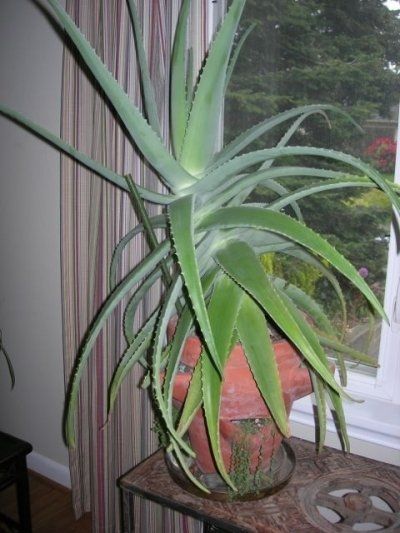
Q: I have a few months old aloe vera plant which is growing up tall and slim. I am afraid it will break under its own weight, so my plant is leaning on a wall. I wonder how do you make your aloe vera plants to grow wide and big with such strong stems?
A:There are a couple of tips and tricks for growing really big plants and not losing control of them.
The first tip for trying to grow a really big plant is you need to make sure your aloe is in a pot that is both large and deep. A well-developed root system is necessary for a large plant to be able to not only grow but to stay alive and healthy.
The next thing you need to do is make sure you rotate the pot regularly. Plants like sunlight and they will grow in the direction of the brightest light. In a really dark room this can make them lean very sharply towards a window or even a lamp. If you have a plant that is growing at a really funky angle, turn the pot so that the plant is leaning away from the light. This will make it start to grow back in the direction of the light and it will slowly start to move back to being more upright. When the plant is back to being upright, don't let it just keep going and wind up growing out of whack again. Make sure to turn the pot about a quarter turn once per month. This allows each side of the plant to get its turn in the sun and works to keep the plant more or less centered and pointing up. When the plant gets even light all around, the whole thing is able to grow better.
The third "trick" is to water your plant regularly. It's true that aloe vera plants are known as being very drought-tolerant, but that just means they are able to survive in conditions without much water, it doesn't mean they thrive and grow perfectly under those conditions. While they are hardy houseplants that can stand up to neglect well, if you want a really huge and happy one, you have to take care of it.
The Aloe you see here is the exact same one shown on the rest of this lens and you can see how large it's gotten over the years.
Do you keep aloe vera plants too? Let me know how yours are doing! I'm also open to questions about aloes, but understand I'm just a houseplant-tender and not a plant care professional...






